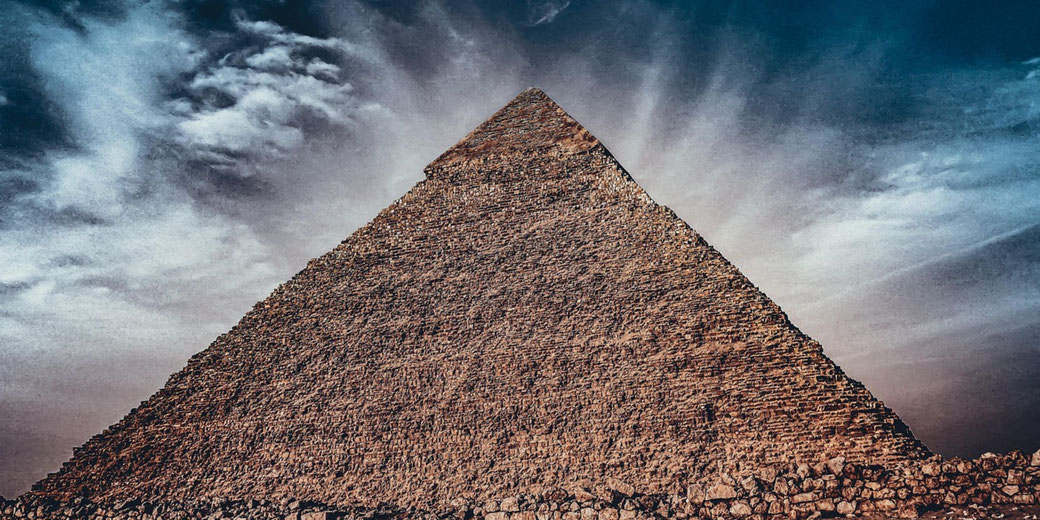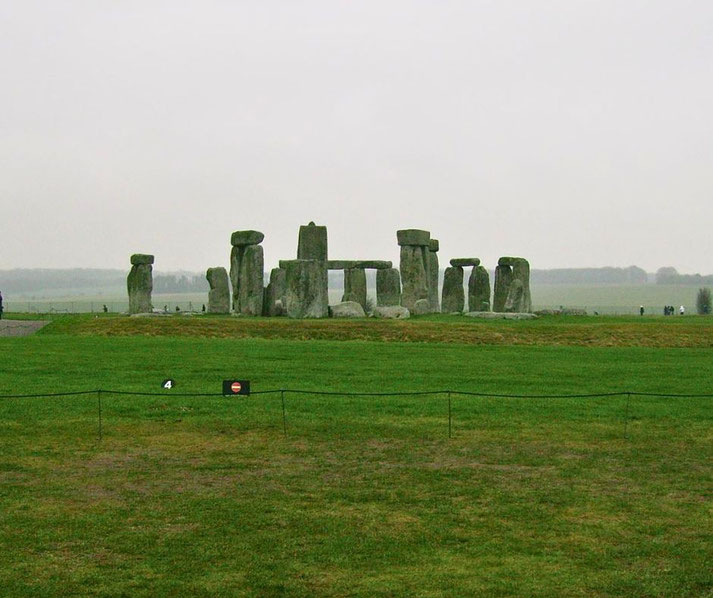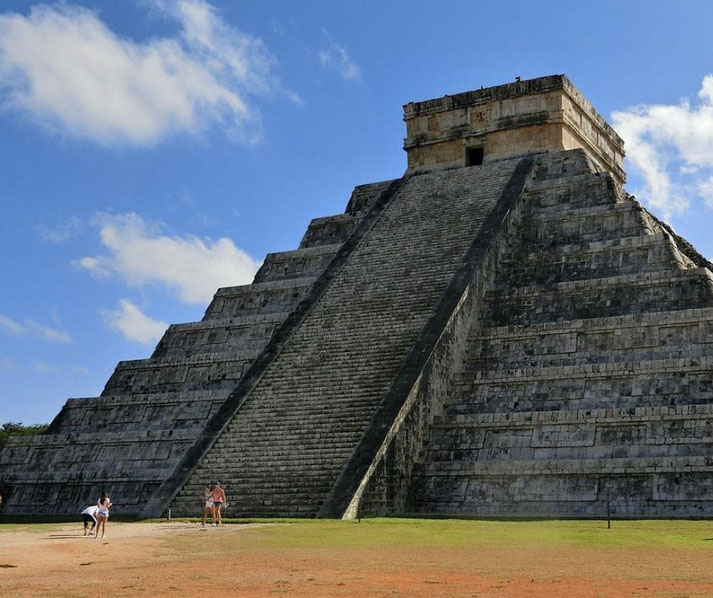Why are ancient structures astronomically aligned?

Across the world, ancient builders aligned their most important monuments with the heavens. From the frozen plains of northern Europe to the arid valleys of Mesoamerica, great stone structures point to celestial events with suspicious accuracy.
Civilisations with no known contact with each other somehow reached similar conclusions: the sky held meaning, and the monuments they built would reflect there understanding of its meanings.
However, alignment with celestial bodies required careful planning, years of observation, and careful building. Such effort suggests that the stars, the sun, and the moon mattered deeply in the lives of these variou sancient people.
But why?
Famous examples of astronomically aligned structures
Among the most widely studied examples, Stonehenge is famous for its particular alignment with the solstices.
It is located on Salisbury Plain in England and was constructed over several centuries, probably beginning around 3000 BCE.
The monument aligns with the summer solstice sunrise and the winter solstice sunset.
Each year, sunlight pierces through the monument’s structure at specific angles during those events, which commemorated significant solar transitions.
The alignment seems to indicate a detailed astronomical knowledge, which Neolithic communities must have developed through generations of observation.

Further south, the Great Pyramid of Giza show remarkable precision in its orientation.
Built around 2560 BCE during Egypt’s Fourth Dynasty, the pyramid’s sides align almost exactly with the cardinal points: north, south, east and west.
Scholars have proposed that ancient Egyptian architects relied on observations of stars such as Thuban in the constellation Draco to determine true north.
They most likely determined true north by using a plumb line and sighting techniques.
The pyramid’s orientation suggests that religious and symbolic factors may have influenced the decision to mirror the heavens in the pyramid’s geometry.
In Mesoamerica, the city of Chichén Itzá contains the famous Temple of Kukulcán, also known as El Castillo.
It was built by the Maya around the 9th century CE, and the temple indicates a complex knowledge of solar movement.
During the spring and autumn equinoxes, shadows from the setting sun create the illusion of a serpent descending the steps of the pyramid’s northern staircase.
The effect coincides with the arrival and departure of Kukulcán, a feathered serpent deity.
The alignment, which appears to be intended to be both dramatic and deliberate, illustrates their connection between the sky, religion, and most likely, royal authority.
At Newgrange in Ireland, an even older structure, built around 3200 BCE, contains a narrow passageway that floods with light at dawn on the winter solstice.
The alignment required precise construction and suggests a special significance associated with the return of sunlight after the darkest period of the year.
The builders of Newgrange obviously had an awareness of solar cycles and used that knowledge to influence the internal experience of those who entered into the tomb.
Why did ancient peoples care so much about stars?
In societies that depended heavily on seasonal cycles for agriculture and survival, the sky provided the closest thing to a modern calendar.
The timing of floods, harvests, and migrations depended on knowing when the seasons changed.
As people lacked printed calendars or mechanical clocks, they looked upward where they watched the regular movement of stars and the sun, tracking the passage of time and predicting changes in weather and daylight.
It is no surprise then, that religious beliefs also developed around celestial bodies.
Many cultures believed that gods dwelled in the sky or communicated through it.
In ancient Egypt, the sun god Ra travelled across the sky by day and the underworld by night, providing them with a concept of the eternal cycle of life and death.
Temples and pyramids constructed in his honour showed solar movement to reinforce his divine authority.
As such, the rising and setting of stars became symbolic of birth and death, the tension between order and chaos, and how power was maintained across generations.
In some cultures, the rulers claimed divine ancestry through celestial bodies. For example, the Inca emperor considered himself the son of Inti, the sun god.
In fact, monuments in his capital city of Cusco and throughout the empire aligned with solar events to strengthen the emperor’s spiritual legitimacy.
In China, the emperor was the Son of Heaven, responsible for maintaining harmony between heaven and earth.
As a result, astronomers employed by the imperial court used celestial data to affirm the emperor’s cosmic role.
Therefore, when ancient people encoded celestial patterns into physical structures, they wove the sacred into the physical world.
Temples, tombs, pyramids, and ceremonial centres became both places of worship and tools for observing time.
What celestial events are the focus of these buildings?
By this point, it is obvious that solstices and equinoxes were the foundation of many alignments.
This is because solstices marked the longest and shortest days of the year, and equinoxes brought equal light and darkness.
Ancient structures often pointed toward the horizon where the sun rose or set on those key dates.
The alignments helped identify the beginning of planting seasons or the need to prepare for winter.
However, significant lunar events also guided ancient construction. The moon’s 18.6-year cycle, which affects where it rises and sets on the horizon, was observed by Neolithic peoples in the British Isles.
The site of Callanish in Scotland has become well known for this, as it displays alignments that match the lunar standstill cycle.
In comparison, the complex of Nabta Playa in Egypt contains alignments more strongly associated with solar observations, particularly solstices.
Certain stars and constellations also gained significance. The ancient Egyptians watched Sirius, the brightest star in the night sky, for its heliacal rising, its first appearance in the dawn sky each year.
That event was thought to herald the start of the annual Nile flood, which was a vital moment in the agricultural year.
In Mesoamerica, the Pleiades constellation had a very important ritual place in the religious calendar, which is the same in the New Fire Ceremony among the Aztecs, where their rising triggered the renewal of cosmic order.
Some structures also aligned with planetary events, most notably the movements of Venus.
Among the Maya, Venus appeared as the morning and evening star, and was tied closely to myth and warfare.
Certain buildings at Uxmal and Caracol demonstrate alignments that matched Venus cycles.

The growing field of archaeoastronomy
Since the mid-20th century, the academic study of astronomical alignments in ancient structures has become more thorough.
As a result, the interdisciplinary field known as archaeoastronomy (which combines archaeology, astronomy, and anthropology) has offered new insights into how ancient cultures observed and interpreted the sky.
For example, research into megalithic sites in Europe, temple complexes in the Americas, and observatories in Asia has shown that many alignments could not have occurred by accident.
Scholars now use computer software to recreate ancient skies and test theories about alignments, in addition to field surveys, satellite imagery, and cultural comparisons to provide additional evidence.
Archaeoastronomers also investigate how cultural meanings attached to the sky varied between societies.
This field of research has concluded that some monuments were made for practical functions, such as recording seasonal dates.
Others were used to cement social hierarchies or supported spiritual authority.
The field continues to grow, helped by new technologies and joint research.
In fact, archaeoastronomy has helped validate oral traditions, reinterpret long-dismissed sites, and uncover forgotten cultural systems built around the sky.

But, is everything really as it seems?
While many structures show clear astronomical alignments, some claims have attracted much nore scepticism.
The sheer number of ancient sites, combined with natural variation in horizon lines, raises the possibility of some coincidental alignments.
However, without written records, interpreting the intention of each building project with accuracy becomes quite difficult.
Certain sites, such as the lines of Nazca in Peru or the temples at Angkor Wat, have attracted somem particularly overblown theories.
Some popular writers have claimed that ancient structures encoded advanced star charts or secret alien knowledge.
However, serious researchers emphasise cultural context and material evidence rather than unfounded conspiracy theories.
Other challenges involve the accuracy of modern measurements, since erosion, reconstruction, and changes in terrain over millennia can affect a monument’s orientation.
In some cases, local geography may have limited building directions, which led to alignments that were less intentional than they appear.
Nonetheless, the clear pattern across continents and civilisations cannot be dismissed with broad generalisations.
The evidence suggests that ancient builders possessed observational skills, architectural knowledge, and religious motivation to intentionally align their structures with the sky.
While not every monument carries an astronomical purpose, those that do offer a rare window into how early societies found meaning when observing the skies above.
What do you need help with?
Download ready-to-use digital learning resources
Copyright © History Skills 2014-2025.
Contact via email
With the exception of links to external sites, some historical sources and extracts from specific publications, all content on this website is copyrighted by History Skills. This content may not be copied, republished or redistributed without written permission from the website creator. Please use the Contact page to obtain relevant permission.





